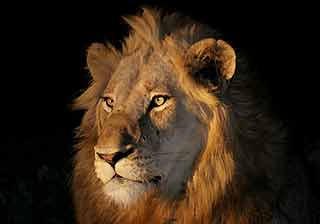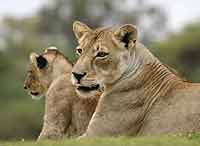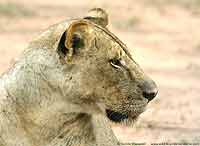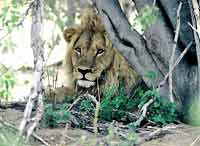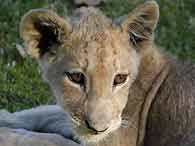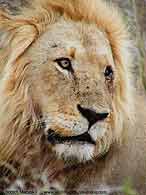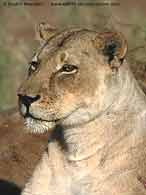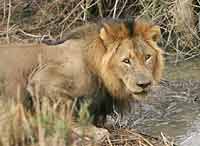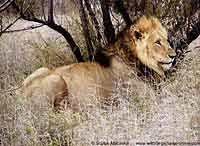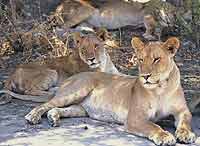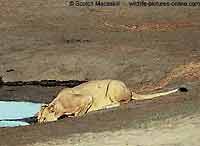Contact Details: Scotch Macaskill, Dirt Road Traders, Currys Post Road, Howick, KwaZulu-Natal, South Africa. Tel: +27 (0)82 578 2329. Privacy: Your privacy is guaranteed. See our Privacy Policy for more. This site accepts advertising and other forms of compensation - see Disclosure and Advertising for details. Site updated: 2022. Copyright © 2002 - 2022 Scotch Macaskill

| |||||||||||||||||||||||||||||
| |||||||||||||||||||||||||||||
|
ALL GALLERIES:
|
Lion Pictures Pg 1It's always exciting seeing lions in the wild. If you're lucky, they'll be close enough to photograph.Whenever I return from an African safari with one or two reasonable lion pictures, I count myself lucky as these magnificent predators are often spotted only in the distance. Even when you do see them at close range, there's a good chance they'll be fast asleep! This gallery of lion images was taken in South Africa (mainly Kruger National Park) and Botswana.
Taking Lion Pictures Although this is only a 2.1 megapixel camera, it has an amazing image-stabilised 10x zoom lens, giving you the equivalent of a 38mm to 380mm lens on a 35mm camera. When you add the Olympus B300 1.7 converter, you are armed with the equivalent of a 640mm lens. That's what allowed me to get a full-frame photograph of the lion with the bad eye. I've since graduated to digital SLR cameras, moving through the Canon EOS Rebel range and now use a Canon EOS 50D and old but reliable Canon EOS 450D. For wildlife photography, a reasonably powerful telephoto lens is essential. Most my photographs of lions have been taken with various Canon lenses I've owned, including the Canon EF 100-400mm f/4.5-5.6 L IS USM, Canon EF 70-300mm f/4-5.6 IS USM, and Canon 400mm f/5.6 L USM telephoto lenses. The Canon 100-400mm zoom is popular amongst wildlife photographers because of its reach, versatile zoom range, and image stabilization. When fitted to a digital SLR body that has the smaller APS-C sensor giving you a 1.6 crop factor, it's like using a 160-640mm lens on a 35mm film camera. That zoom range will give you plenty of scope for photographing lions, allowing you to place the subject in context by including the surroundings at the wide end, while also being able to zoom in close for intimate lion portraits. It's a great lens when on safari in Africa, particularly if you're restricted to photographing wildlife from a vehicle, as is normal in the national parks and luxury safari lodges of South Africa, Botswana, Kenya and Tanzania. More About Lions Return to Wildlife Galleries
Permitted Uses: See Terms of Use. | ||||||||||||||||||||||||||||
|
| |||||||||||||||||||||||||||||
